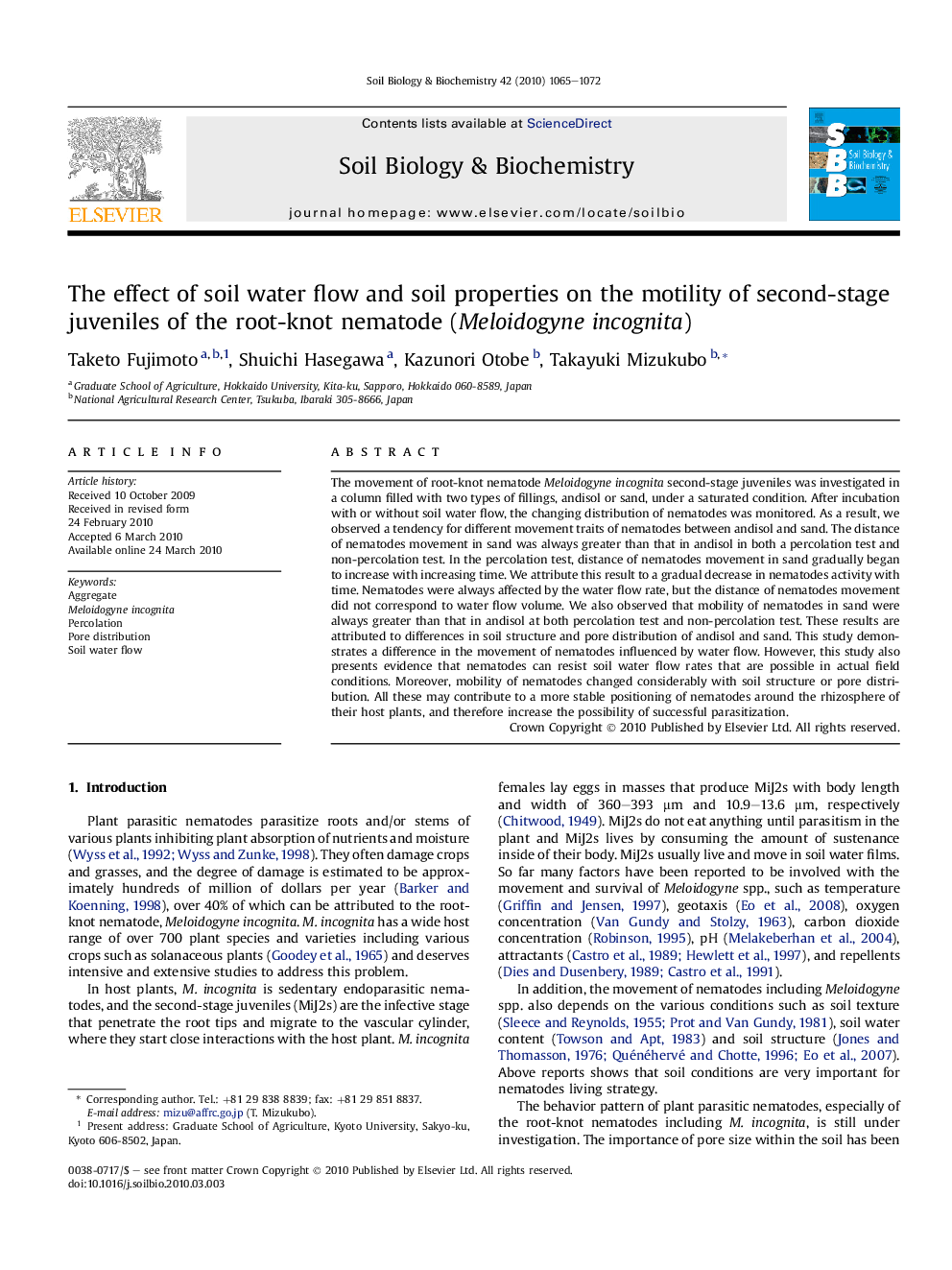| Article ID | Journal | Published Year | Pages | File Type |
|---|---|---|---|---|
| 2026265 | Soil Biology and Biochemistry | 2010 | 8 Pages |
The movement of root-knot nematode Meloidogyne incognita second-stage juveniles was investigated in a column filled with two types of fillings, andisol or sand, under a saturated condition. After incubation with or without soil water flow, the changing distribution of nematodes was monitored. As a result, we observed a tendency for different movement traits of nematodes between andisol and sand. The distance of nematodes movement in sand was always greater than that in andisol in both a percolation test and non-percolation test. In the percolation test, distance of nematodes movement in sand gradually began to increase with increasing time. We attribute this result to a gradual decrease in nematodes activity with time. Nematodes were always affected by the water flow rate, but the distance of nematodes movement did not correspond to water flow volume. We also observed that mobility of nematodes in sand were always greater than that in andisol at both percolation test and non-percolation test. These results are attributed to differences in soil structure and pore distribution of andisol and sand. This study demonstrates a difference in the movement of nematodes influenced by water flow. However, this study also presents evidence that nematodes can resist soil water flow rates that are possible in actual field conditions. Moreover, mobility of nematodes changed considerably with soil structure or pore distribution. All these may contribute to a more stable positioning of nematodes around the rhizosphere of their host plants, and therefore increase the possibility of successful parasitization.
